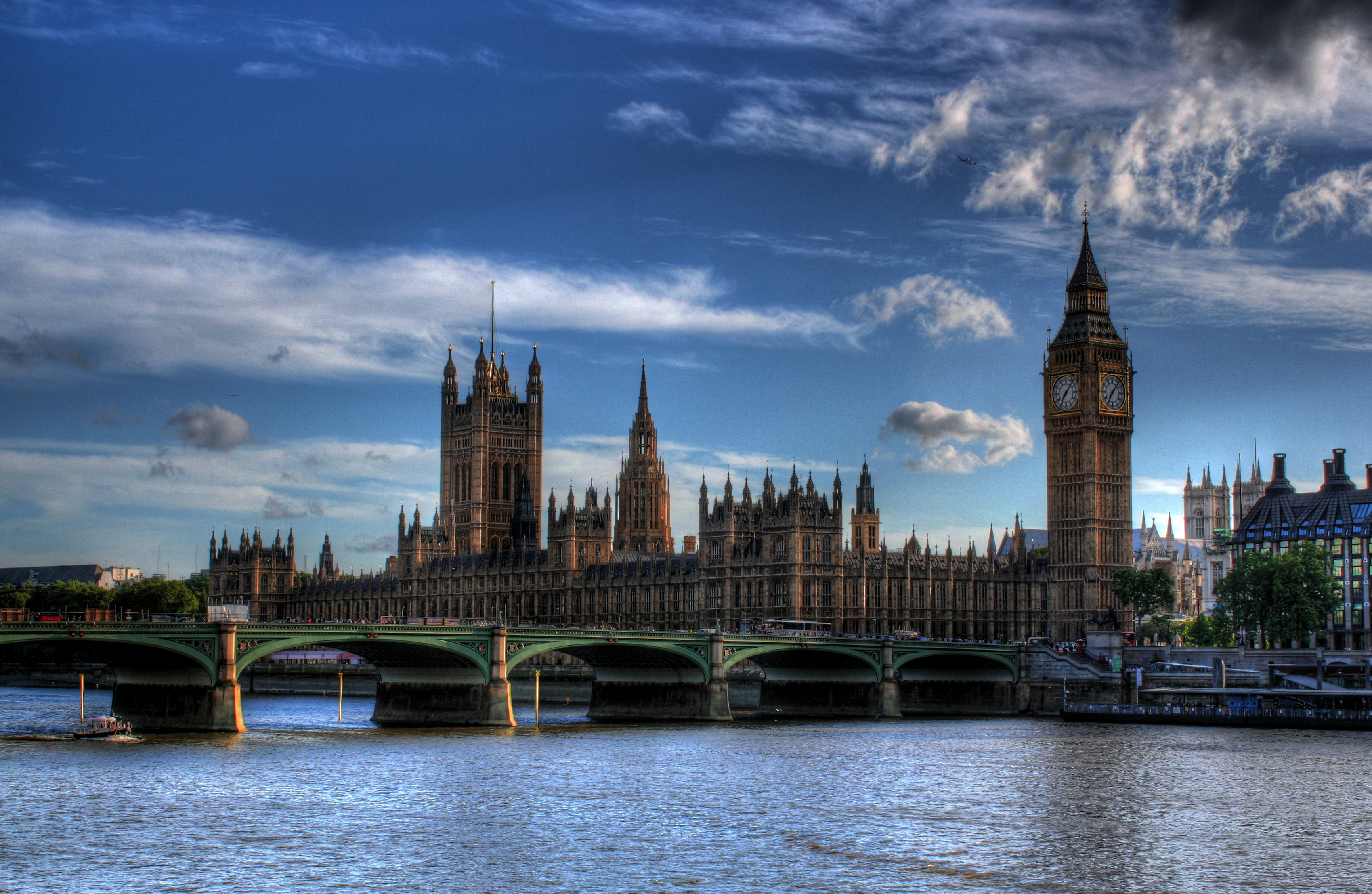On May 7th, voters in England, Wales, Scotland and Northern Ireland will head to the polls to vote for 650 members of Parliament (MPs) to represent them in Westminster. Projections from various sources expect fairly similar outcomes: between 270 and 290 seats for the Conservative (Tory) Party, between 260 and 280 for the Labour Party, between 21 and 26 for the Liberal Democrats (Lib Dems), about four for the far-right UK Independence Party (UKIP), 40 to 55 for the Scottish National Party (SNP) and only one each for the Green Party and the Welsh nationalist party, Plaid Cymru. Though these numbers are bound to change between now and election day, any movement is expected to be minimal, and the most important factor almost certainly won’t change: After the election, no one party will hold a majority, resulting in a hung parliament.
Should this happen, it will mark the second election in a row in which neither the Conservative nor Labour Party was able to win a simple majority in Parliament, something that has only occured twice since 1945. In 1974, a hung parliament resulted in new elections, while the 2010 hung parliament established the current Tory-Lib Dem coalition government. The seeming inevitability of another hung parliament, one in which the Labour and Conservative parties will likely receive only a combined 68 percent of the vote, demonstrates a new reality for the UK political climate: For the foreseeable future, two-party politics are over.
Perhaps the most important factor in the demise of two-party politics is the rise of the SNP, the current majority party in the Scottish Parliament, best known for spearheading the 2014 independence referendum. Although the referendum’s call for independence fell short at 45 percent of the vote, it allowed Scots a forum to air feelings of broader discontent that had led voters to flock to the SNP. Until recently, Scotland overwhelmingly supported Labour, as the party’s pro-worker and pro-welfare policies are in line with the ideological leanings of many Scots. But because the major parties predominantly draw their support from English voters, they often disregard the needs of their Scottish constituents, breeding widespread discontent. In the past few years, many former Scottish Labour supporters have seen their party fail to prevent policies deemed as anti-leftist such as tuition fee increases, National Health Service marketization, welfare cuts and, most upsetting to Scots, the renewal of the Trident program housing nuclear-armed submarines at Clyde Naval Base 25 miles west of Glasgow. Labour’s apparent failure to stop these policies has been compounded by a general sentiment of disconnect between Scotland and Westminster.

In addition, many voters who originally supported the Lib Dems quickly left the party in 2010 after the formation of the new coalition government with the reviled Tories. More liberal Lib Dem supporters saw the union as a betrayal, with many of the party’s Scottish voters finding their way to the SNP instead. Between support from die-hard Scottish nationalists and those disappointed with mainstream Westminster politics, the SNP is expected to win up to 53 of Scotland’s 59 seats in the coming elections. That bloc is important: The SNP will likely play a large part in the parliamentary arithmetic, a fact which has led many to deem the newly risen party “kingmakers.”
Sitting far on the other side of the political spectrum, UKIP, a libertarian party most strongly associated with its euroskepticism, will also play a large role in forcing a hung parliament. The party supports an independent UK outside the realm of the European Union, a view that complements the party’s other key characteristics: strong anti-immigration policies and fierce nationalism. UKIP’s first real taste of legitimacy came in 2014 after winning a plurality of votes in the European Parliament elections. In the same year, two Conservative MPs separately defected to UKIP and consequently won their special elections as UKIP candidates, thereby giving UKIP its first two MPs. Since then, UKIP has generally polled at around 13 percent, suggesting that it will win one to six seats in May.
UKIP’s disruptive strength lies in the broad geographic dispersion of its supporters. While the SNP is supported exclusively in Scotland, and while Labour and the Tories draw their support heavily from the North and South respectively, UKIP polls relatively uniformly in England and Wales. Though this doesn’t translate directly into seats, UKIP’s broad base upsets the two-party system by drawing voters away from both of the big players. UKIP’s support is comprised largely of former Conservative voters, but many Labour voters are also drawn to the party’s anti-establishment appeal and their euroskeptic, anti-immigration policies. A UKIP challenge may therefore flip many supposedly safe seats and could help prevent either party from winning a majority in Parliament.
The final major player is the Green Party. The Greens are seen as the ultra-liberal, anti-establishment alternative to Labour and are considered even further left than the SNP. The party currently polls at 5 percent and is only expected to win the one seat it currently holds in Brighton Pavillion. Green supporters are almost exclusively former Labour voters, which evens out some of the growth of the more-conservative UKIP. Together, the growth of the Green party and UKIP has chipped away at the large bases of the two major players.
With a hung parliament appearing nearly certain in May, the path to forming a government remains unclear. Since no party is likely to capture the 326 of 650 seats needed to form a majority government, one possible outcome is a coalition government similar to the current alliance formed between Conservatives and Lib Dems in 2010. In a coalition, members of two or more parties become government ministers, and the parties agree to a joint set of policy objectives. Because the Lib Dems, the party historically most likely to coalesce with either of the major parties, will probably not win enough seats to form a coalition with a major party alone, this outcome also seems unlikely. The alternative option is the formation of a minority government, in which the party with the plurality of seats gains the support of enough other MPs to pass a vote of confidence in their government but must still cobble together votes for each piece of legislation individually.
The more likely outcome of the election in May seems to be a Labour minority government with confidence from SNP. In the early months of the campaign, it seemed as if a Labour-SNP coalition might be a strong possibility. This government would see Alex Salmond, former SNP leader and a likely SNP MP, serving as the Deputy Prime Minister behind Ed Miliband, the Labour leader, as Prime Minister. However, the possibility of power for a secessionist party like the SNP dismays many English and Welsh voters. The Tories capitalized on that wariness, running an advertisement that portrayed Miliband literally in Salmond’s pocket. In response, Miliband was forced to rule out any possibility of a true coalition between the two parties. However, the option of a “confidence and supply” agreement remains open. In such an agreement, Labour would form a minority government, and the SNP would agree to support the confidence motion of the government in exchange for the government’s support on some established set of policies.
Other possible outcomes involve various “rainbow” governments, which may take the form of either coalitions or confidence and supply agreements between parties. The Tories may be able to patch together support from the Lib Dems, UKIP and the Democratic Unionist Party from Northern Ireland. However, this result seems unlikely; the Lib Dems are pro-European and so clash with UKIP’s distinct euroskepticism. Additionally, the drop in support that the Lib Dems experienced after forming a coalition with the Tories in 2010 may cause them to be more conservative about joining hands with the Conservative Party again in May. Another possibility is a Labour and Lib Dem coalition, either alone or with the support of the Greens and Plaid Cymru. Ideological and policy differences between the Lib Dems and Labour are smaller than those between the Lib Dems and the Conservative Party, thus representing a more politically viable alliance. Yet with current polling numbers, even this government could require the confidence of the SNP to rule.
When the dust settles after a whirlwind of post-election negotiations, the era of two-party politics will have ended — leaving the UK with a fractured political landscape. Still, the new dynamic may lead to a more inclusive system of government. With no clear majority party, the legislative process will be forced out into the open. Though it may come at the expense of efficiency, a minority government will be forced to lead with increased transparency and a broader, more fluid base of input, meaning even backbenchers may get to play a rare role in shaping policy. As they head to the polls on May 7th, voters will not just be checking boxes next to the names of candidates; they will also be casting votes for the end of politics as usual.
